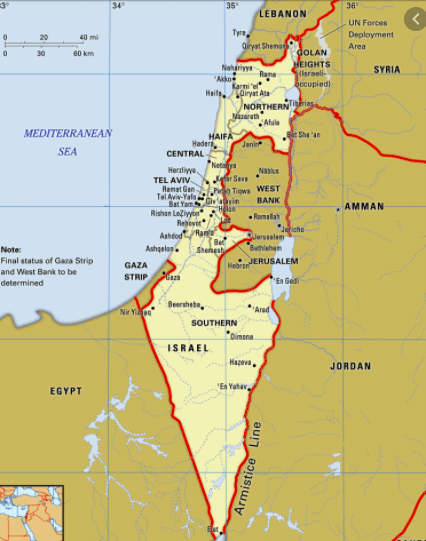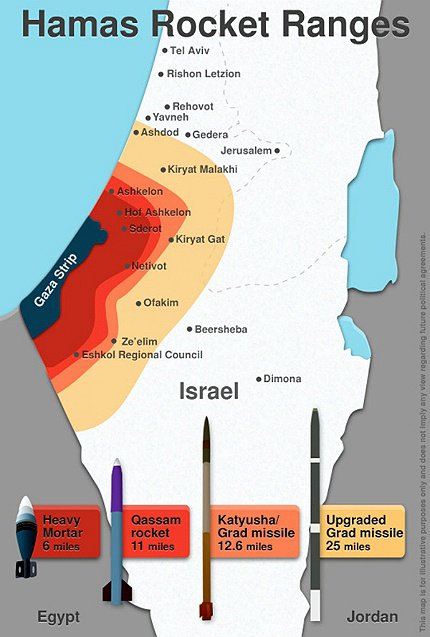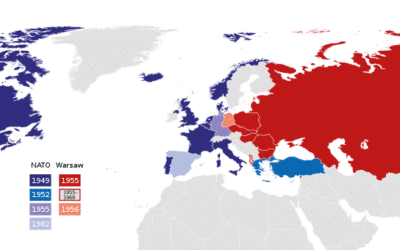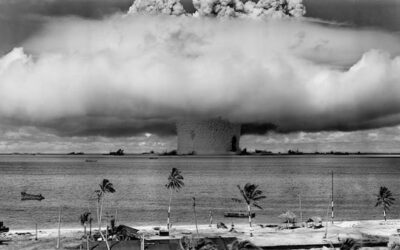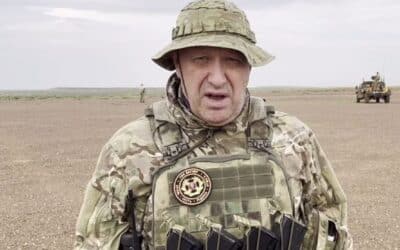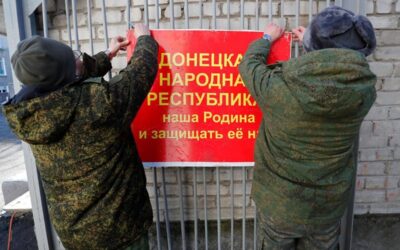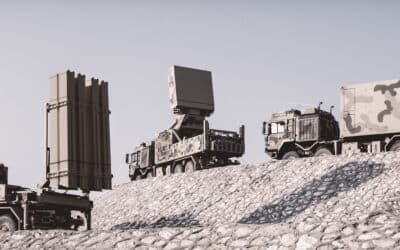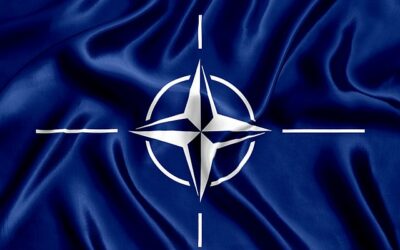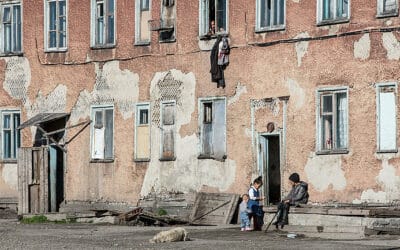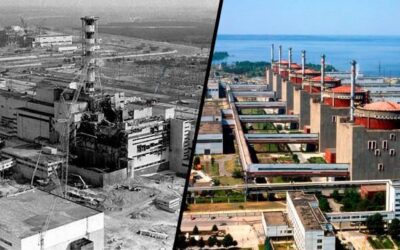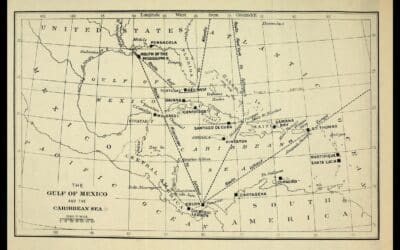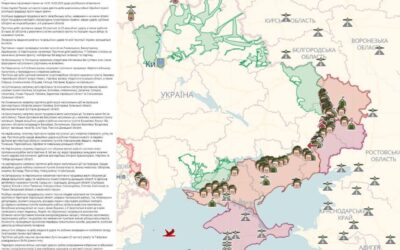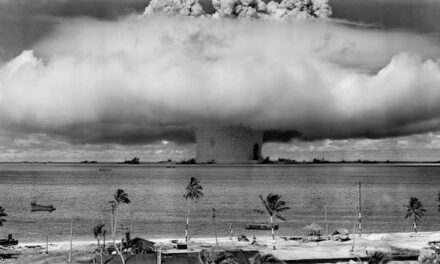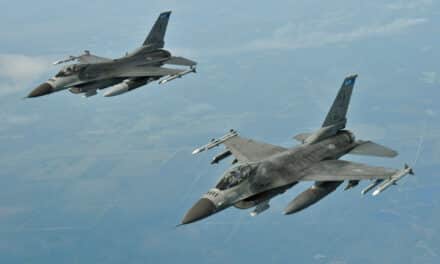Israel and Palestine – The War
On October 7, 2023, exactly 50 years after the beginning of the Doomsday War, Hamas carried out an unprecedented attack on Israel, resulting in the deaths of hundreds of civilians, with many being taken as prisoners. How could this happen, what led to the conflict between Palestine and Israel, and how is Europe connected to all of this?
It seems that the conflict between Palestine and Israel has been ongoing for centuries, deeply rooted in history, making it seemingly impossible to resolve. However, it all began just over 100 years ago when Palestine was under the control of the Ottoman Empire. At that time, Christians, Muslims, and Jews coexisted peacefully, with no major conflicts in the region.
The Era of Nationalism in Europe
In the 19th century, the era of nationalism swept through Europe. All the peoples of Europe wanted their own separate states, and the Jews also desired their own country. They mainly lived in the Russian Empire and Austria-Hungary, and the idea of creating their own state began to take shape. There were debates on how to achieve this, and ultimately, the idea of resettling in their historic homeland in Palestine gained prominence.
After a wave of Jewish pogroms in Europe, they realized the necessity of leaving, and while most migrated to the United States, some headed to the Middle East. At the beginning of the century, tens of thousands of Jews arrived in Palestine, where they started buying land from Turkish landowners at high prices. Arab tenants who were leasing these lands were forced to seek new places to live and work, sowing the first seeds of discord between Arabs and Jews in Palestine. Arab residents in Turkey also dreamed of their own state.
World War I
Everything changed with World War I. The war intensified nationalist ideas among both Arabs and Jews living in Palestine. Then, the British arrived in the region, trying to gain any support against the Ottoman Empire. First, they promised to help the Jews establish a new state, then they promised the Arabs to create a large Arab state in the entire Middle East, including Palestine, and finally, they agreed to divide the land with the French. What could go wrong, right?
After the war, the British gained control of Palestine, and the influx of Jewish immigrants increased. This led to new clashes with the local Arab population. Jews didn’t want to employ Arabs, and vice versa. Disputes over land ownership also became a source of conflict. When the Nazis came to power in Germany, tens of thousands of Jews fled Europe for Palestine, leading to Arab uprisings against this policy.
Plan to divide Palestine in two
The British realized that they couldn’t maintain order in Palestine and decided to simply rid themselves of the territory. The UN proposed a plan to divide Palestine into two states, one Arab and one Jewish. However, it was a peculiar and almost unworkable plan, as the territory resembled a mosaic, with regions of Jewish majority proposed to be handed to the Arabs and vice versa. The Arabs rejected this plan, deeming it unacceptable.
The conflicts escalated, and the UN understood that it couldn’t maintain order in Palestine. They decided to rid themselves of the territory. The UN proposed a plan to divide Palestine into two states, one Arab and one Jewish, but it was a strange and almost unworkable plan, as it resembled a mosaic of regions with a majority of one group proposed to be given to the other, and vice versa. The Arabs rejected this plan, considering it unacceptable.
Image Credit: https://www.clearias.com/
Arab countries declared war on Israel
It was unjust, but the Jews proclaimed the establishment of a new state. At that time, all the Arab countries declared war on Israel. They aimed to destroy Israel and drive the Jews into the sea, but they couldn’t accomplish that. Israel won the war, but in the process, it occupied much more land than was originally planned by the UN. Egypt occupied the Gaza Strip, and Jordan took control of the West Bank of the Jordan River. Jordan took care of the new territories and their residents, but Egypt did not invest in the development of the Gaza Strip.
After the war for Israel’s independence, conflicts between Arabs and Jews became even more intense. Palestinians were leaving the occupied territories for neighboring countries, and there were disturbances and killings. Mosques and synagogues were vandalized, and Arab countries didn’t abandon the idea of driving Jews into the sea. They were preparing for a new war, which happened in 1967 and was called the Six-Day War. This war changed the balance of power in the Middle East.
Doomsday War of 1973
However, the Doomsday War of 1973 led to an international crisis. Saudi Arabia, the Gulf monarchies, Iraq, and many other countries influenced oil prices and introduced an oil embargo, which meant they stopped selling oil and manipulated oil prices in protest against the United States, which supported Israel. Arab countries had stopped supplying oil to the market, causing oil prices to soar.
This had a significant impact on the world. The Soviet Union was also affected, as it was a major oil producer by then. However, by this point, oil was already being sold to the West. It was a significant part of détente policy – a way to reduce tensions and promote trade rather than destroy each other. So, adding the United States to the mix, the oil crisis also triggered a gasoline crisis in America as a reaction to the extremely high prices.
As a result, local conflicts in the Middle East, particularly Israel’s conflicts with its neighboring Arab states, ended up turning into international energy crises.
Colonization of the Arab States
Israel occupied the Golan Heights in Syria, the West Bank of the Jordan River, the Gaza Strip, and the Sinai Peninsula. They imposed a strict regime here, and Jewish settlers began colonizing the new territories. These settlements became a major point of contention.
In the years that followed, there were several more wars between Israel and Arab states, all of which ended in victories for the Jews. Eventually, the Arabs decided to abandon the idea of destroying Israel. Egypt and Israel signed the Camp David Accords, which saw the return of the Sinai Peninsula to Egypt and mutual recognition of each other’s right to exist.
However, Egypt did not plan to reclaim Gaza, which became the main problem of the region. Moreover, the decision to make peace with Israel was not accepted by Islamist extremists. They even assassinated the President of Egypt, Anwar Sadat, for it.
Image Credit: https://www.quora.com/
The very beginning of Israel and Palestine
Arab states and Israel managed to establish some form of peace in their politics. However, Israel’s military still occupied the Gaza Strip and the West Bank of the Jordan River. At this point, the conflict shifted from an Arab-Israeli one to a Palestinian-Israeli conflict.
In the 1960s, the Palestinian Liberation Organization (PLO) was established, led by Yasser Arafat. Arafat organized dozens of attacks in Israel and led an armed struggle for the creation of a Palestinian state. The PLO aimed to destroy Israel to control the entire territory of Palestine. Acts of terrorism and civilian casualties in the 1970s and 1980s became a tragic routine for Israel.
Colonization and Occupation
Meanwhile, the colonization of Palestinian land by Israeli residents continued. The Israeli army was deployed to protect this occupation, making the situation even more severe for Palestinian Arabs. In the late 1980s, Palestinians initiated the First Intifada, which was their struggle for liberation from the occupied territories. Small local clashes escalated into confrontations with the Israeli army, and Israel responded with harsh measures, leading to the deaths of thousands of people.
The end of the First Intifada came with the signing of the Oslo Accords between Israeli Prime Minister Yitzhak Rabin and Yasser Arafat, aiming to establish peaceful relations. Arafat had long spoken of the need for peace but later changed his stance, orchestrating new acts of terrorism and reigniting the conflict.
After the Oslo Accords, Israeli extremists assassinated Prime Minister Yitzhak Rabin. Attempts to find peace were repeatedly undermined by violence from both sides. But why do conflicts emerge in societies in the first place, and how are they analyzed? Conflict studies, one of the main branches of political science, offers two fundamental concepts of understanding.
The first concept suggests that, in essence, the world naturally tends toward stability and equilibrium. Therefore, conflict is considered a disease, a disruption of established circumstances. It is unequivocally negative, and efforts should be made to combat it.
The second concept argues that conflicts are not entirely bad and are, in fact, a natural part of the developmental process in relationships between different states over specific periods. According to this perspective, conflict is not a tragedy but rather an element of the life cycle. So, while it’s not exactly a good thing, it’s not entirely unusual.
The West Bank and the Gaza Strip
The West Bank and the Gaza Strip, incorporated into Palestine, became divided. In Gaza, a radical movement called Hamas emerged. From the very beginning, it was a ruthless terrorist organization. Hamas was disappointed that the Palestinian Liberation Organization had reconciled with Israel. The leaders of the movement declared their main goal was still the destruction of Israel and the killing of Jews.
The Palestinian administration and Hamas found themselves at odds. While the situation remained complicated, this marked a new chapter in the Israeli-Palestinian conflict.
Hamas and it’s reign
Israel lost its influence over the Gaza Strip. Now, Hamas ruled the region. To gain the support of the population, they built schools and hospitals while conducting strong anti-Jewish propaganda.
In 2000, the Second Intifada began, resulting in even more casualties than the first one. After several years of a cruel and bloody conflict, Israel made a fateful decision that would affect the region’s future. All Israeli troops and settlers were withdrawn from the Gaza Strip. A massive wall with dozens of watchtowers was built along the border, effectively imposing a blockade on Gaza. Arabs from Gaza lost their means of livelihood, and Hamas deliberately didn’t develop the Gaza Strip economically, keeping 2 million people in destitution and powerlessness.
Many had no choice but to join the terrorists. As a result, a new generation of Palestinians grew up who had never interacted with Jews and only knew about them through propaganda.
The wall
The construction of the wall had several consequences. On one hand, Israel did secure stability and security for a few years. On the other hand, the people of Gaza came under the complete control of Hamas. The terrorists used the city for recruiting new soldiers, firing homemade rockets at Israel from residential areas, and paying little attention to the fates of ordinary people.
Israel regularly launched retaliatory strikes against Gaza and conducted ground operations. As a result, Islamic terrorists and the Israeli state suffered and continue to suffer, while ordinary Jews and Arabs who simply wanted to live in peace were caught in the crossfire.
If the Palestinian administration still holds power in the West Bank, and life there is relatively peaceful, Gaza represents a true humanitarian catastrophe. Hamas exists thanks to support from Iran, Israel’s main regional adversary. Iran’s primary political goal is the destruction of the Israeli state, which is why, despite Hamas being Sunni and Iranians being Shiite, they found common ground in their shared hatred of Jews.
Hamas is supported by Iran and Hezbollah
In addition to Hamas, Iran supports the terrorist organization Hezbollah, which, along with Hamas, launches attacks on Israel. However, from Lebanon, Hamas attacks Israel, and Israel retaliates, creating a spiral of hatred and violence.
In October of 2023, a new war began between them. Israel has already initiated strikes on Gaza, and a ground operation to eliminate Hamas is likely. What happens next is uncertain. Israel may get a few years of tranquility while terrorists regroup for a new attack, or the cycle of violence may continue.
The future of the region remains uncertain, with no easy answers. We can only hope that Israelis and Palestinians find a way to peace.
Related Articles
10 Best Handguns for Self-Defense
When it comes to...
The Truth About Sanctions: Why Don’t They “Work”?
In 2022,...
After the WAR initiated by HAMAS on October 7th, the Middle East will not be the same
On the -th of...
The Israeli army is prepared for an offensive on the Gaza Strip, involving attacks from “air, sea, and land.”
The IDF (Israel...
War in Israel: Current Developments – Video
Rafah...
Russia vs USA: Who Would Win in a Potential War?
In the...
NATO vs China: Who Would Win in a Potential War?
In the realm of...
11 Best Assault Rifles in the World
Welcome to a world...
Yevgeny Prigozhin (Wagner founder) is dead
According...
What You Need to Know About Joining NATO
Has any country...
Terrifying Realities of a Potential Nuclear War
The Devastating...
What to Do in Case of a Nuclear Attack
What to Do in Case...
11 Strongest and Most Powerful Navies in the World
When it comes to...
The Most Powerful Nuclear Weapons
The sheer power...
Understanding the Nature of War – The Clash of Wills
War is the...
Ukrainian Defense Forces Celebrate One-Year Anniversary of Kherson Region Liberation
Around one year...
Prigozhin First Video Speech After Unsuccessful Uprising
Following a recent...
11 Best Sniper Rifles in the World
Important Factors...
What is Russia saying about the war in Ukraine, Episode 1
Did you ever...
13 Most Powerful Weapons in the World
Weapons of immense...
What is Happening in Russia, Episode 3
Welcome to the...
What is Happening in Russia, Episode 2
Have you ever...
10 Strongest Tanks in the World
Tanks represent...
10 Strongest Armies in the World
When it comes to...
Putin: We cannot stop the fire when they advance on us!
Putin ten...
10 Best Air Defence Systems in the World
Image:...
Alexei Navalny Letters From Prison
Image:...
Ukraine’s Struggle for Survival and Western Dependency
Ukraine has long...
What is Happening in Russia, Episode 1
Have you ever...
10 Strongest Fighter Jets in the World
Image:...
10 Strongest NATO Members
Image:...
Mobilized Soldiers Expose Dire Conditions and Neglect in Deployment to Luhansk
source:...
Why is everything so poor and sad in Russia?
Image:...
Tensions Escalate in Northern Kosovo as Serbian President Mobilizes Army
Image:...
Putin’s Russia and the Need for a Fresh Security Approach in Europe
Image:...
DeSantis Declares Presidential Bid with Elon Musk
Image:...
Russian military personnel shelled the Zaporizhia Nuclear Power Plant
Image:...
Prigozhin Revelations The Truth Behind the Capture of Bakhmut
Image:...
President Zelensky Visit G7 Turning Point in Russia-Ukraine War
Image:...
Turning a Blind Eye No More: Zelensky’s Bold Stand Against Crimean Annexation
Unfortunately,...
Navigating the Fluidity of War and Geography: Insights and Strategies
War is Geography:...
Latest Updates on Russian Invaders’ Activities in Occupied Territories
Russian Invaders...
US Denies Ukrainian Pilots Training on F-16 Fighter Jets
Complexities of...
West Strong Support for Ukraine’s Recovery and Containment of Russia
Kremlin's Failed...
Ukraine Supreme Court Chairman Confronts Allegations of Blatant Bribery
Vsevolod Knyazev...
Gold Coin Treasure from Alexander the Great Era found in Annexed Crimea
Crimea's Hidden...
Rishi Sunak Hails Zelenskyy as a Modern-Day Churchill
Volodymyr...
The Moral Factor in War: Ukraine’s Key to Victory
"We were actively...
The West’s Triumph in the New Cold War: Technology of Freedom Wins Out
The Chinese leader...
The Illusion of Power: How Putin’s Russia is Making the Same Mistakes as its Past Leaders
Modern Russia and...
